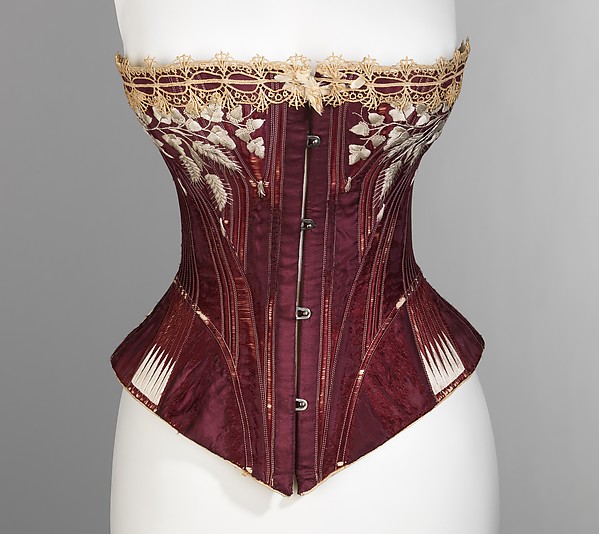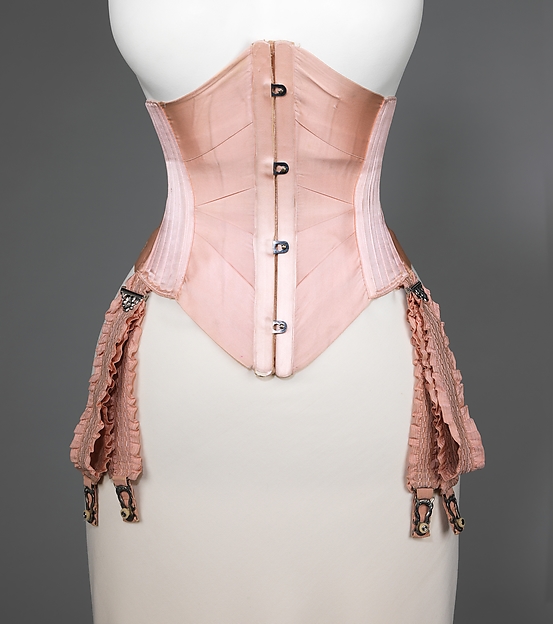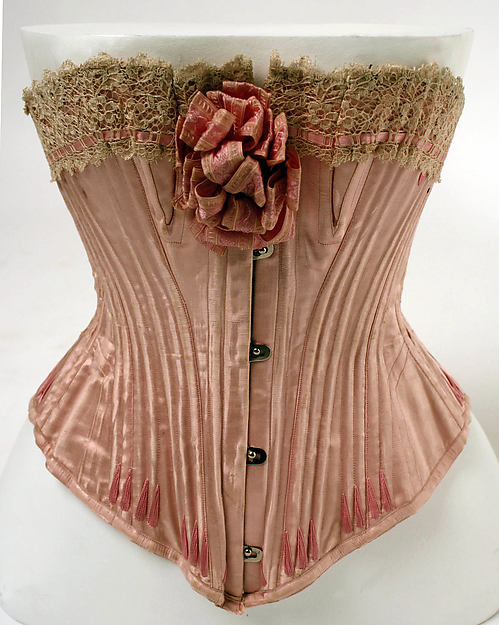I thought I'd share some of the ones that have really captured my imagination of late, these beautiful corsets are at the Metropolitan Museum of Art and I am sharing them because they hint at what is to come in my 2012 collection:
This is just stunning to my eyes, but the most notable things for me are the really interesting seam lines, the flossing and decorative embroidery. Amazing! This corset is dated 1876 and made by the Royal Worcester Company
Below is a fantastic example of a ribbon corset. Dated 1908 and made by J B Corset Company in America. I just love the shape and colour of this corset and the matching garters are just divine.
The next corset is 1904-05 and French. I love the pattern cutting on this corset so much I am tomorrow going to develop a waspie pattern based on its seamlines, flossing and decoration. I'm particularly attracted to this corset because it embodies the lightness of touch, delicacy and romance I want to be in my collection but also the strength and robust nature of the corset itself and it's ability to modify the body.
Photo archive and source: The Met











